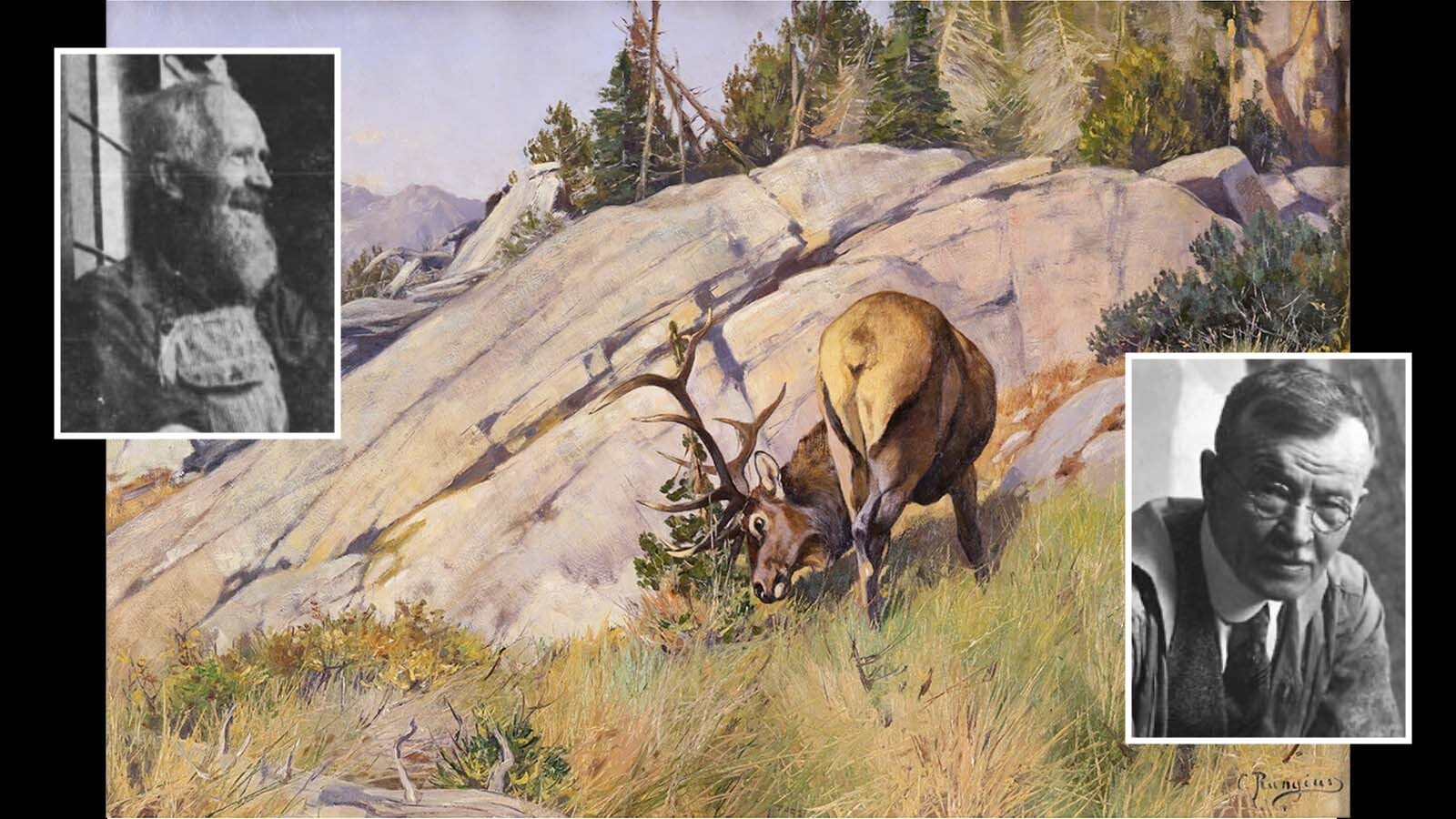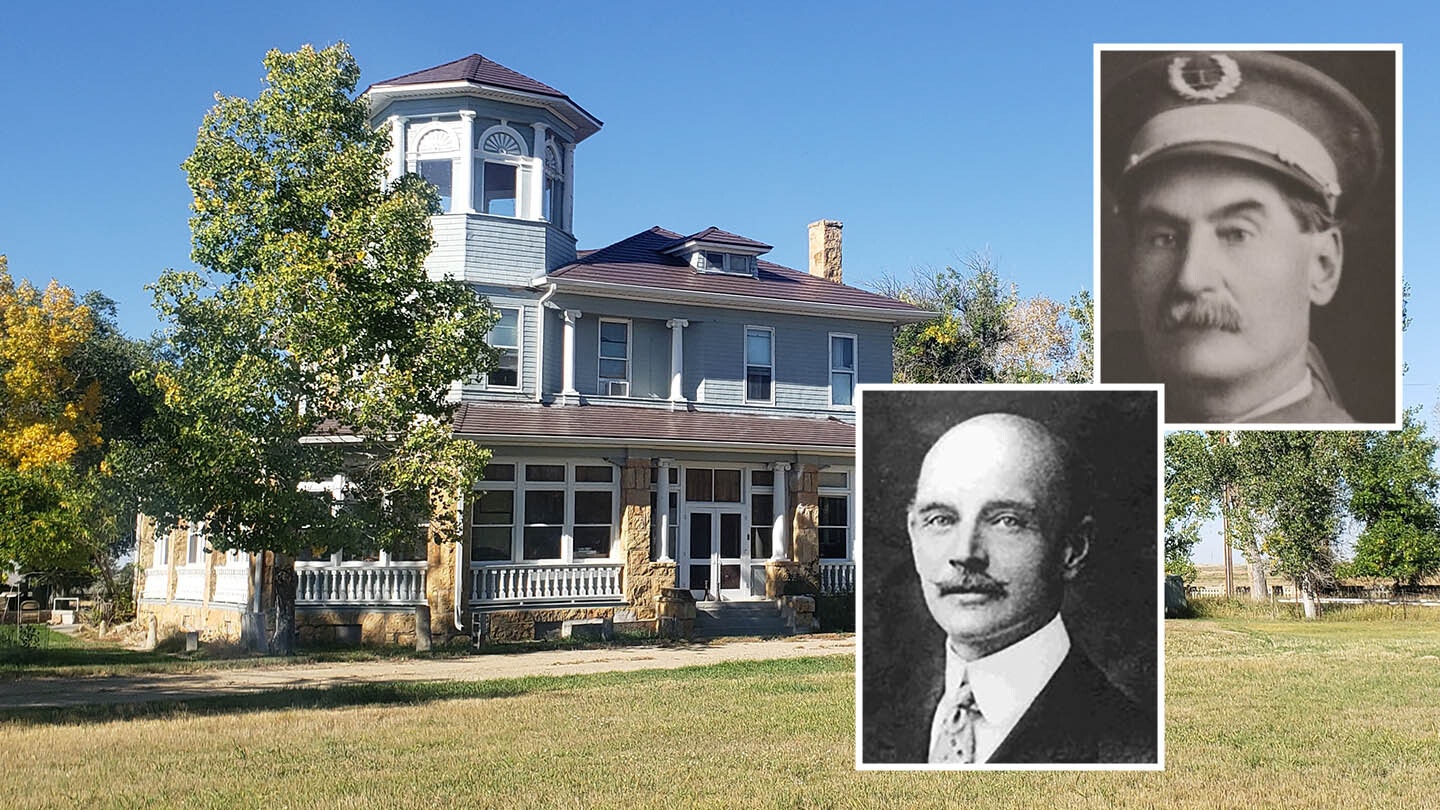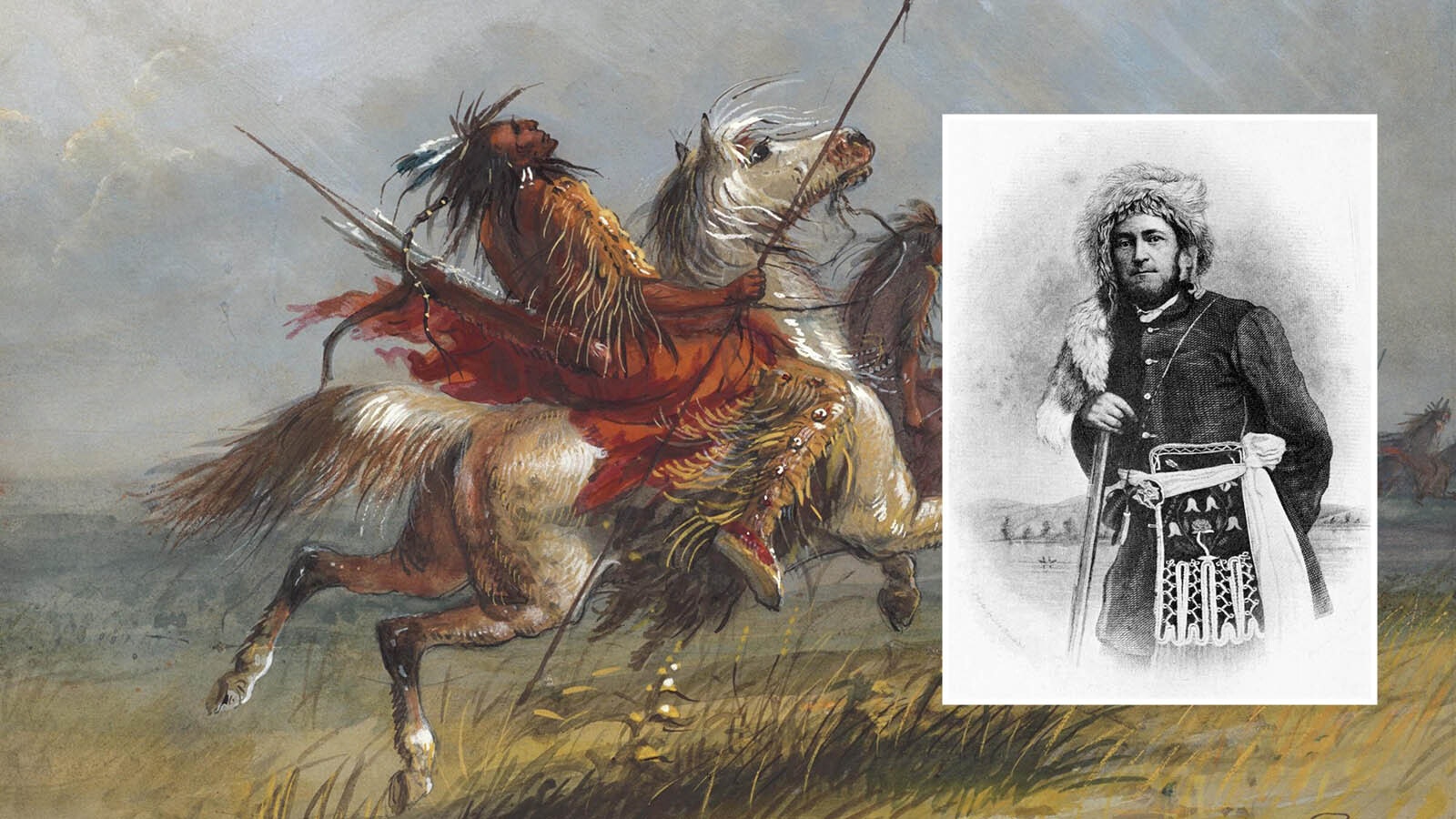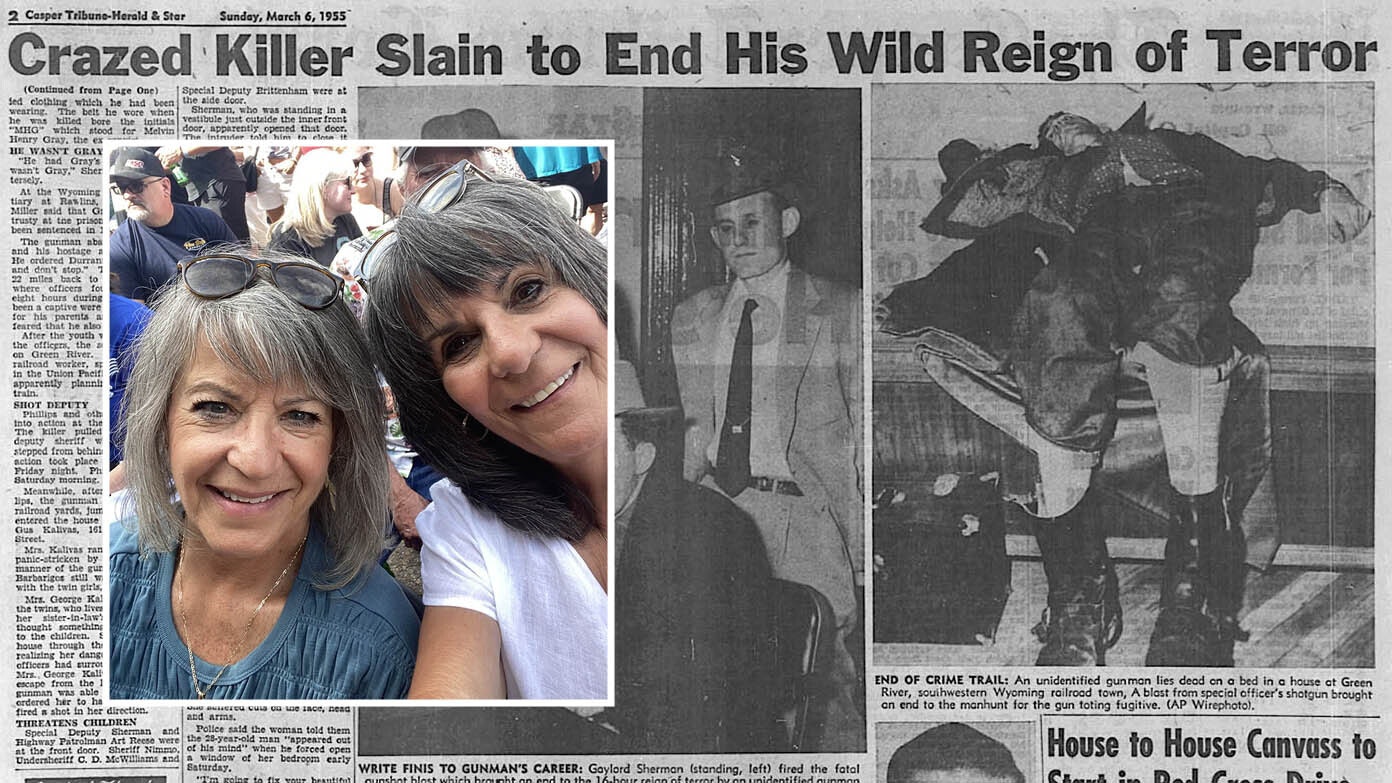With the timber industry and talk of war grabbing today’s headlines, flashbacks of similar stories came to my mind.
Manpower shortages of World War II led to establishment of a prisoner of war camp at Ryan Park in the Medicine Bow mountains of southern Wyoming. While a camp, the facility housed both Italian and German prisoners.
The prisoners were brought to Ryan Park on the west side of the Snowy Range at the instigation of R. R. Crow, a major lumberman, who needed men to harvest timber from the Medicine Bow National Forest.
Several stories have been written concerning the history of the WW II POW camps located throughout the Cowboy State, but little has been shared concerning the impact such facilities made on local folks.
A couple of weeks ago I shared the history of a POW camp near my hometown of Saratoga with readers of Cowboy State Daily. The article presented the history, but didn’t adequately portray the personal impact the camp made on local residents, especially guards and workers in the Ryan Park camp.
Over the years, I have gathered stories about the Ryan Park Camp and how the POWs worked in the timber industry, that I share below.
Brother fighting enemy, dad guarding POWs
By Neal A. Ward
During the World War Two years there was a great shortage of young men to perform the work in sawmills and the woods as most of them had been drafted or enlisted in the armed forces.
R.R. Crow, the owner of the sawmill and logging operations in Saratoga, Wyoming, requested prisoners of war (POWS) to perform these duties. His request was granted and the first group to arrive were Italian POWS.
As young children, a group of us stood staring as the first canvas covered army trucks arrived in Saratoga to deliver POWS to the sawmill. We were all awestruck as this was the enemy our soldiers were fighting, and they had American soldiers with rifles escorting them to the sawmill.
For a while we were very curious and went to see if we could catch a glimpse of these strange enemy soldiers, but then it became boring and we found other things to do.
I'm not sure, but I don't believe many of the Italian POWS worked long at the sawmill. [Most] worked mainly in the woods [harvesting timber]. I don't recall hearing of any escape attempts by this group of prisoners. I never heard any negative comments about them.
Shortly after the Italian POWS left, the German POWS arrived. From stories that I heard, they required stricter supervision as escape was always a possibility.
The mill and timber workers all told stories about working with the POWS. My dad told a story of a POW cleaning up sawdust around some machinery.
Most of the machinery in the mill did not have guards over the shafts that powered them, and had long set screws protruding from the shafts where they connected to drive pulleys, saws, etc.
[One] POW didn't see the set screw, got too close to the shaft and it caught his pants. Supervisor Fred Caton was standing on the other side of the shaft and pushed him in the face back away from the turning shaft. They said the surprised soldier stood there in his shorts unharmed, but his pants were in shreds wrapped around the shaft.
The POWS liked girls. Watching the young American guards whistle at the girls with the "Wolf Whistle," which was the rage at the time, the POWS tried to imitate them. When they saw a girl they whistled at her, but it came out-of-tune and lost something in the translation.
My Dad went to work in one of the horse barns on Brush Creek where the POWS would cut and skid logs to the road for transport to the mills to be cut into lumber.
He had two POWS to assist him with horse shoeing, harness repair, feeding, and care of the horses. He said these men were outstanding horseshoers. They would fit the shoe to the hoof and then heat it and burn it into the hoof to seat it before nailing it in place.
One of the men's names I remember was Wilhelm Vogt (my Dad called him Bill). He spoke English fairly well and a friendship developed that I couldn't begin to understand.
My brother was in Europe fighting Germans and my father was treating one of them as if he was one of our neighbors.
Wilhelm told my Dad that he was from a fairly well-off family and his parents had sent him to Switzerland to avoid the war. He said one day he received a letter telling him to return to Germany and the Army or his parents would be executed.
Dining On Horse Meat
Eating horse meat had long been a common practice in Europe, but looked upon as the ultimate, despicable sin in the United States and especially in the western United States.
A tree fell on a skid horse breaking its back and it had to be shot. Some of the prisoners immediately started to butcher it, but were sent back to work by the guards.
At every opportunity the POWS cut meat from the dead horse. It became such a problem that the Commanding Officer finally posted a guard near the horse to keep the prisoners from eating it.
The two men working for my Dad obtained some of the meat some way or another, and asked if they could use his skillet to cook the "Horse Flesh." He was horrified that anyone would even eat horsemeat, but to call it flesh made it sound even worse to him. I don't recall, but I don't think he let them use his skillet.
When the POWS first started skidding logs with horses, at the end of the day, when they took the harness off, they unbuckled every strap on every harness. The following morning every harness had to be put back together before they could go to work. This went on for several days.
Some people thought the prisoners didn't know much about working horses, but one must wonder if this wasn't a planned work slowdown, as work horses were in common everyday use in Germany.
Some years after the war, while I was working at the Saratoga National Fish Hatchery, a visitor told me that he was a former Army Officer whose job it was to check German Prisoners of War and identify SS Personnel.
He had been sent to the Camp at Ryan Park and they checked all of the German soldier's arm pits for three small dots tattooed in a triangle. I believe he said they identified two SS soldiers and removed them from the camp.
Tie inspector worked with WWII POWs
A column entitled “Peverley’s Patter,” penned by George Peverley, in the April 1, 1989, issue of the Rawlins Daily Times related more stories, tidbits, facts and memories of the camp.
Peverley interviewed Art Bergquist, who was a tie inspector for the Union Pacific during the end of World War II and became well-acquainted with many German prisoners-of-war working out of the POW camp in the Ryan Park area.
Bergquist became personally acquainted with most of the German “soldaten” in the vicinity. Art was born in Sweden and came to the United States in 1928 and had been a resident of the Upper North Platte River Valley since 1935.
Peverly wrote, “Since Bergquist spoke Swedish (and this language is somewhat similar to German) he was able to converse quite ably with the imported workers. Some of them, he added, could speak English.”
The interview continued, “Art says he ‘got along fine’ with the young men and often gave them Life magazines that highlighted World War II pictures.”
Peverly reported that Bergquist remembered that the “foreigners liked being ‘in the timber and mountains’ and said he thought they were captured by the Allies during fighting in Italy.”
Among their duties were to work on the loading docks of the Saratoga & Encampment railroad in Saratoga. Bergquist pointed out that the “workers were under guard by army personnel, but were usually amiable and hardworking.”
When the camp closed, the prisoners were returned to Europe. The camp where they lived, became the Ryan Park Campground and the Forest Service has marked locations of many of the former compound facilities.
Dick Perue can be reached at rrichardperue@gmail.com





